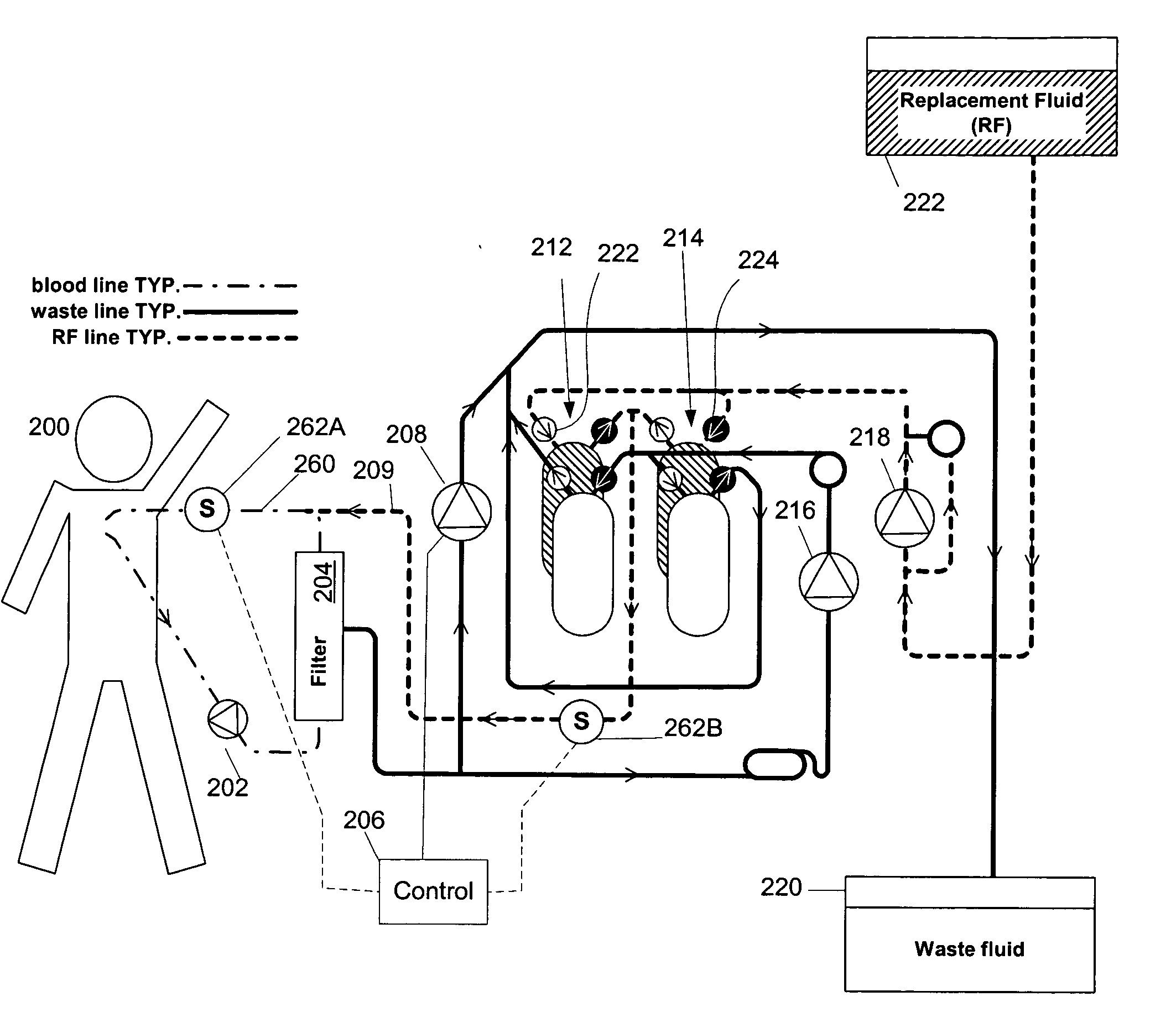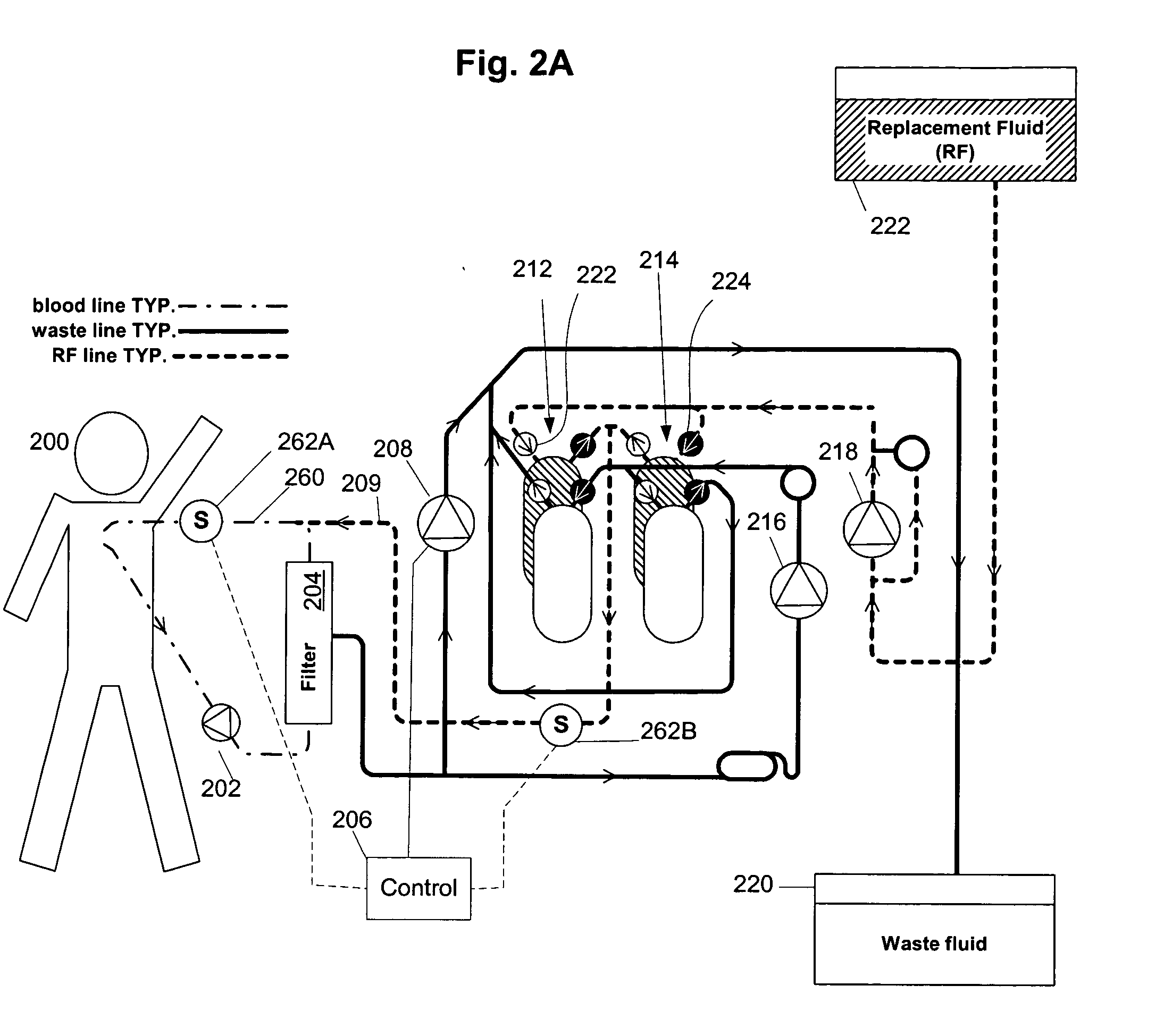Volumetric fluid balance control for extracorporeal blood treatment
- Summary
- Abstract
- Description
- Claims
- Application Information
AI Technical Summary
Benefits of technology
Problems solved by technology
Method used
Image
Examples
Embodiment Construction
A volumetric balance control mechanism may be implemented in a hemofiltration device. For the sake of illustration, the invention is discussed as applied to a particular hemofiltration system as described in patent application Ser. No. 09 / 513,911, entitled “Synchronized Volumetric Fluid Balancing Systems and Methods,” filed Feb. 25, 2000, the contents of which are hereby incorporated by reference as if fully set forth in their entirety herein. However, it should be understood that the discussion in this context is not intended to be limiting of the control mechanism and method of the invention as will be readily understood by persons of ordinary skill in the art.
FIG. 1 illustrates a hemofiltration apparatus employing the present invention. Blood flows from the patient 100 through an arterial line 102a and returns blood to the patient via a venous line 102b. Waste is drawn through a waste line 104 from a treatment device 106 (conventionally, a filter) and sent to a disposal channel 1...
PUM
| Property | Measurement | Unit |
|---|---|---|
| Pressure | aaaaa | aaaaa |
| Flow rate | aaaaa | aaaaa |
Abstract
Description
Claims
Application Information
 Login to View More
Login to View More - R&D
- Intellectual Property
- Life Sciences
- Materials
- Tech Scout
- Unparalleled Data Quality
- Higher Quality Content
- 60% Fewer Hallucinations
Browse by: Latest US Patents, China's latest patents, Technical Efficacy Thesaurus, Application Domain, Technology Topic, Popular Technical Reports.
© 2025 PatSnap. All rights reserved.Legal|Privacy policy|Modern Slavery Act Transparency Statement|Sitemap|About US| Contact US: help@patsnap.com



